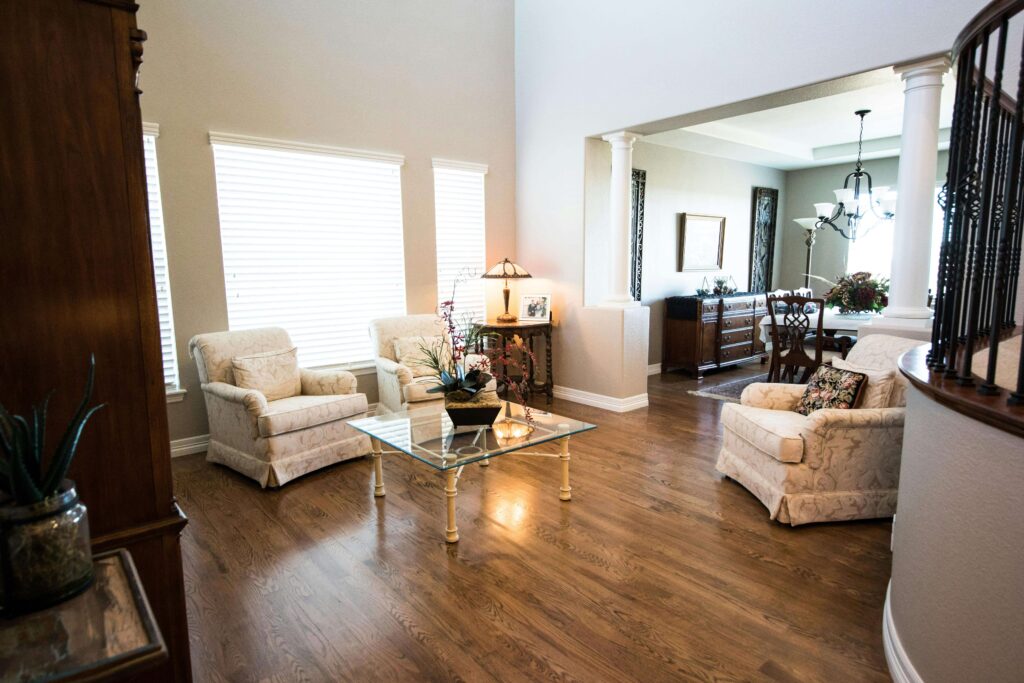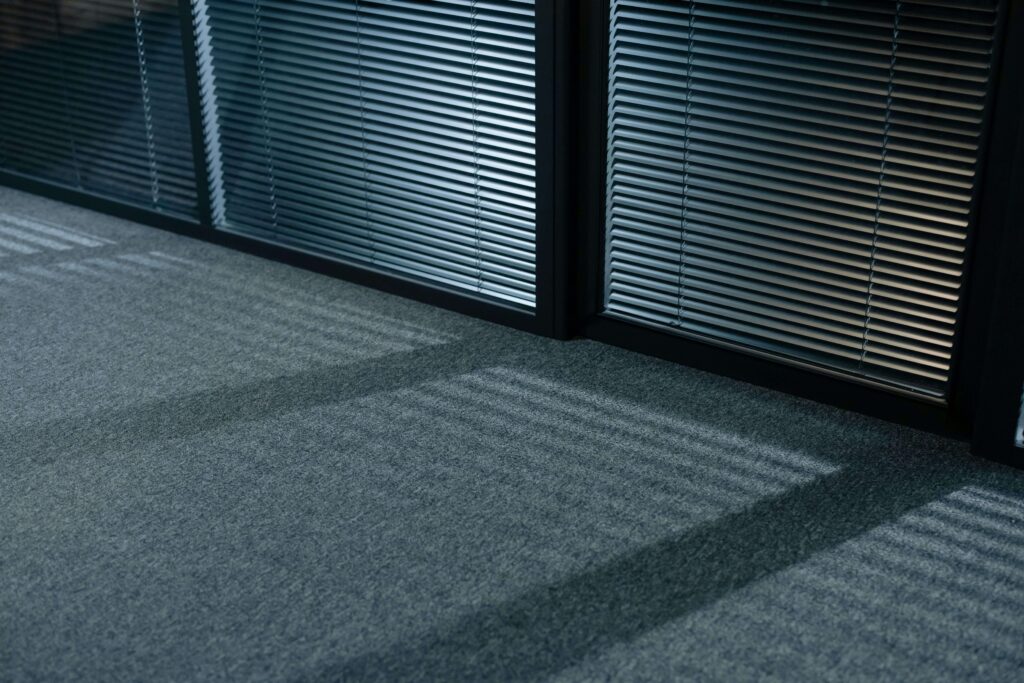
Did you know choosing the right flooring can transform your home’s atmosphere and functionality? With numerous options available, you may feel overwhelmed by all the choices available to you.
When choosing your flooring, it’s important to consider your lifestyle, budget, and aesthetic preferences. In addition, there’s an array of flooring types that you can choose from, including hardwood, laminate, tile, carpet, and vinyl flooring, and each type has unique benefits. So, you’ll want to consider how each option fits into your daily life and the specific areas of your home that require particular attention.
Ready to enhance your living space? Explore practical flooring installation tips and expert recommendations to help you find the perfect flooring for each room in your home.
When selecting flooring for your home, several critical factors influence the decision. Assessing durability, maintenance needs, aesthetics, and budget will help ensure you choose the most suitable flooring for your lifestyle and space.

Durability is a top priority for many homeowners. The type of flooring you choose needs to withstand the wear and tear of daily life.
Durable materials like hardwood, tile, or luxury vinyl are excellent choices for high-traffic areas like hallways, living rooms, entryways, and kitchens. Such flooring offers various levels of durability, with some materials more resistant to scratches, dents, and stains.
For example, hardwood is renowned for its longevity but may dent under heavy furniture. Vinyl offers excellent resistance to moisture and is a good option in damp areas.
In contrast, less-trafficked areas like bedrooms might benefit from the softer touch of carpet or the elegance of laminate.
Consider the activity level of your household as you evaluate flooring materials. Families with children or pets often benefit from more durable options that can withstand wear and tear. Options like tile and laminate can also provide a balance of durability and comfort, ensuring that your choice will hold up over time.
Different flooring materials come with varying maintenance requirements.
Vinyl and porcelain tiles are typically low-maintenance, requiring just regular sweeping and occasional mopping. On the other hand, hardwood floors, while beautiful, require regular polishing and can be prone to scratches and water damage.
Tile flooring is easy to clean but may require occasional re-grouting. Carpet, though cozy, can trap allergens and requires frequent vacuuming. Before making a decision, consider your willingness and ability to maintain your flooring choice.
Your flooring choice significantly impacts the overall look and feel of your home. You want your choice to complement your existing décor and style preferences.
That said, whether you’re aiming for a modern, rustic, or traditional style, there’s a flooring option to match.
Hardwood offers timeless appeal, while laminate and vinyl can mimic the look of wood or stone at a lower cost. Tiles come in various patterns and colors, offering endless design possibilities.
Consider colors, patterns, and textures that align with your vision. Light-colored floors can create a spacious feel, while darker tones add warmth and sophistication. Additionally, textures like distressed wood or sleek tiles can provide visual interest and durability, enhancing your home’s overall ambiance.
Match your flooring choice with furniture and wall colors to create a cohesive look.
Budget constraints are often a deciding factor in flooring selection. While investing in quality materials for long-lasting results is important, consider ways to maximize your budget without compromising on style.
Research cost-effective options like laminate or vinyl, which can mimic the look of higher-end materials. While high-end materials like hardwood or natural stone can be expensive, budget-friendly options like laminate and vinyl offer similar aesthetics without the hefty price tag.
Consider the upfront cost and the long-term value, including durability and maintenance costs.
Choosing the right flooring type is crucial to achieving both functionality and aesthetic appeal in your home. Each flooring option offers unique benefits and challenges that can significantly impact your living space.
Hardwood flooring is a classic choice, renowned for its elegance and durability. You can select from various wood species such as oak, maple, walnut, and cherry. Solid wood flooring provides a timeless finish, while engineered wood flooring offers added stability.
This flooring is ideal for living areas, dining areas, and bedrooms, where style and longevity are priorities.

Laminate flooring is a cost-effective alternative that mimics the appearance of wood or tile. It comprises multiple layers, providing durability and resistance to scratches and stains.
Laminate works well in bustling households, making it suitable for areas like family rooms, hallways, or playrooms.

Tile flooring, available in ceramic and porcelain varieties, is highly versatile and ideal for moisture-prone areas. Ceramic tile provides a broad range of designs, whereas porcelain is denser and more durable.
Tile flooring is well-suited for kitchens, bathrooms, and entryways where durability is essential.

Carpeting adds warmth and comfort to your spaces. It’s also available in numerous styles, colors, and fibers, and it can enhance the aesthetic appeal of your home.
Carpet is particularly fitting for bedrooms and family rooms, where comfort and aesthetics are priorities.

Vinyl flooring stands out for its durability, versatility, and ease of maintenance. It comes in various forms, including luxury vinyl plank, vinyl tiles, and sheet vinyl, and is particularly resistant to water.
Vinyl’s versatility makes it a favorite in busy households or areas prone to spills, like kitchens, bathrooms, and laundry rooms.

If you’re prioritizing sustainability, eco-friendly flooring options are available.
Utilizing eco-friendly options can significantly reduce your home’s environmental footprint, making it a strong choice for conscious consumers.
Selecting the right flooring for each room in your home is essential for both functionality and aesthetics. Different areas have unique requirements based on moisture, foot traffic, and design preferences. Understanding these needs will help you make informed decisions.
Ultimately, understanding the specific requirements of each room will guide your flooring decisions, ensuring functionality and style throughout your home.
Understanding installation options and challenges is crucial when planning your flooring project. Whether you tackle the project yourself or hire professionals, knowing what to expect will lead to a smoother installation process.
Here’s a summary table showing the ease of DIY installation, the recommendation for professional installation, common challenges faced during installation, and the ideal scenarios for each flooring type.
| Flooring Type | DIY Installation | Professional Installation | Common Challenges | Ideal for |
| Hardwood | Challenging (requires experience) | Recommended for best results | Subfloor preparation, acclimation, precision cuts | Long-term durability, high-end finish |
| Laminate | DIY-friendly (click-lock systems) | Optional (for complex layouts) | Leveling subfloor, dealing with tricky corners | Cost-effective, quick installation |
| Tile | Difficult (requires specialized tools) | Strongly recommended | Subfloor leveling, grouting, cutting tiles to fit | High-moisture areas, durable finish |
| Carpet | Difficult (requires stretching and seaming) | Recommended | Seam alignment, dealing with room edges | Soft, warm flooring, soundproofing |
| Vinyl | DIY-friendly (peel-and-stick or click-lock) | Optional (for sheet vinyl) | Ensuring a smooth subfloor, cutting to fit | Water-resistant, budget-friendly |
| Eco-friendly Options (Bamboo, Cork) | DIY-friendly (depending on type) | Recommended for best finish | Subfloor preparation, acclimation, avoiding moisture exposure | Sustainable living, unique aesthetics |
Installing new flooring can be a rewarding experience, but it’s not without challenges. Here are some common installation challenges and tips on how to overcome them.

Choosing the perfect flooring for your home involves considering various factors, including durability, maintenance, aesthetics, and budget. With the right approach, you can find a flooring solution that not only meets your practical needs but also enhances the beauty of your home. If you’re feeling overwhelmed by the options or need personalized advice, consider getting professional help.
Ready to add or update the flooring in your home? Contact us today to schedule a consultation and explore our portfolio to see how we’ve helped other homeowners transform their spaces with the perfect flooring solutions.

Step into any standout NYC home, and you'll notice it immediately—the floors make a statement. From sustainable bamboo that captures natural light to dramatic herringbone patterns that define luxury, your flooring choice sets the tone for everything above it. In...
Read More
This blog post will provide practical, expert-backed ideas to help homeowners maximize space, style, and functionality in small bathrooms. The goal is to attract urban homeowners in NYC who are looking for space-saving solutions and professional renovation guidance while positioning...
Read More
Imagine walking into your kitchen 10 years from now and still loving every detail—the elegant cabinetry, the classic finishes, and the perfect layout that makes cooking effortless. A timeless kitchen isn’t just about style; it’s about creating a space that...
Read More